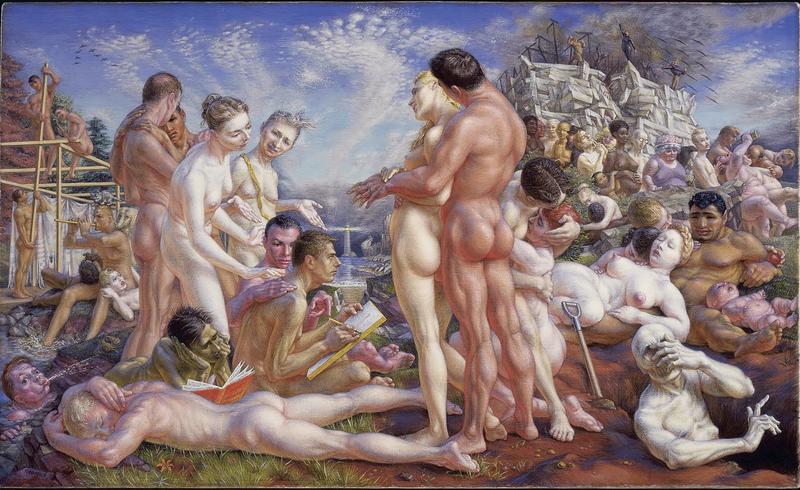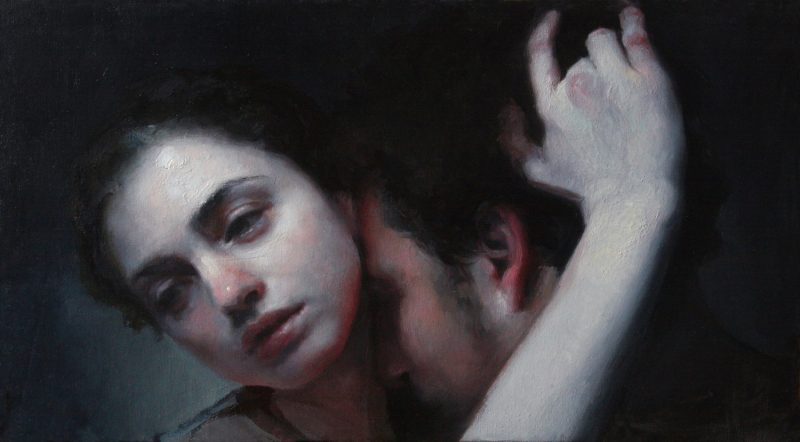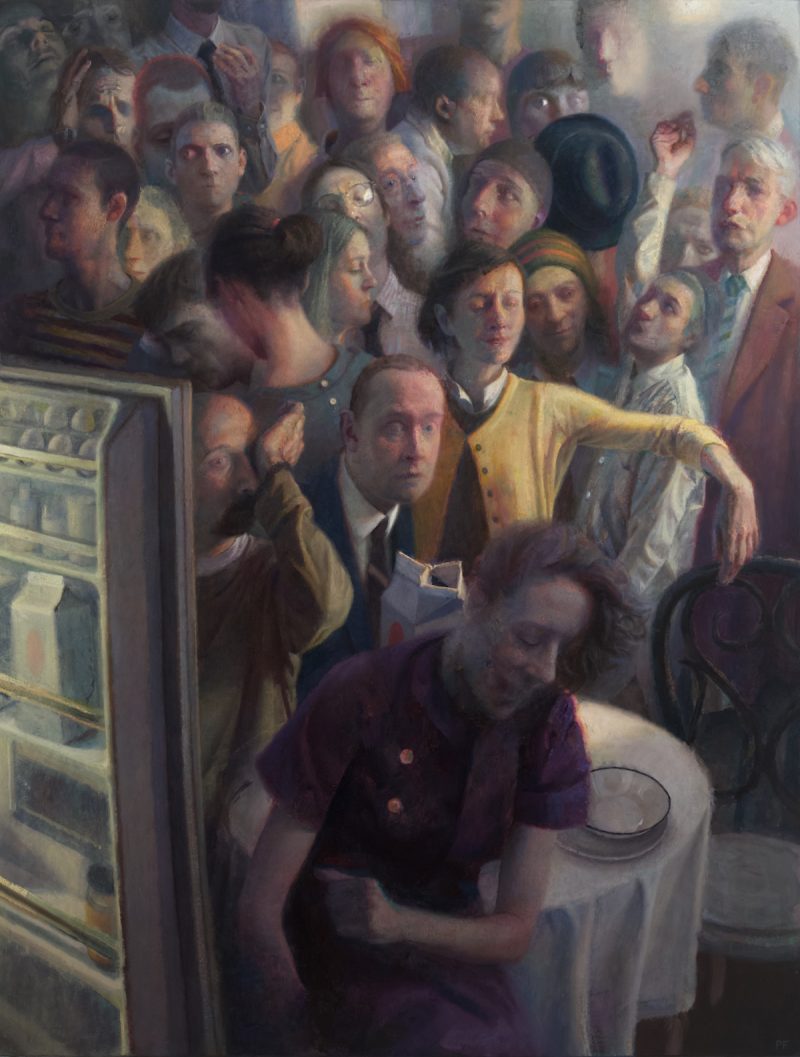The painting is divided into two halves by the standing figures at center. On the left side we see the Good, and on the right the Bad. The Good contains Cadmus’ friends, relatives, and lovers involved in activities such as building, playing the flute, reading, and Cadmus himself is seated drawing. Directly behind him in the distance sits a lighthouse that represents the Enlightenment.
On the right side we see Death just having dug his own grave. Behind him lethargic figures loll about and an overweight baby cries, unable to roll. A herd of people carry a struggling fat woman as they filter down from the man-made mountain, where military men set off missiles under dark clouds.
This painting was based on a 1938 E.M. Forster essay about the virtues of tolerance and kindness. Cadmus was gay during an era of intolerance for homosexuality. The horrors of WWII played a part in Cadmus’ beliefs that civilization must learn to have compassion, if ever we are to have peace and harmony.




